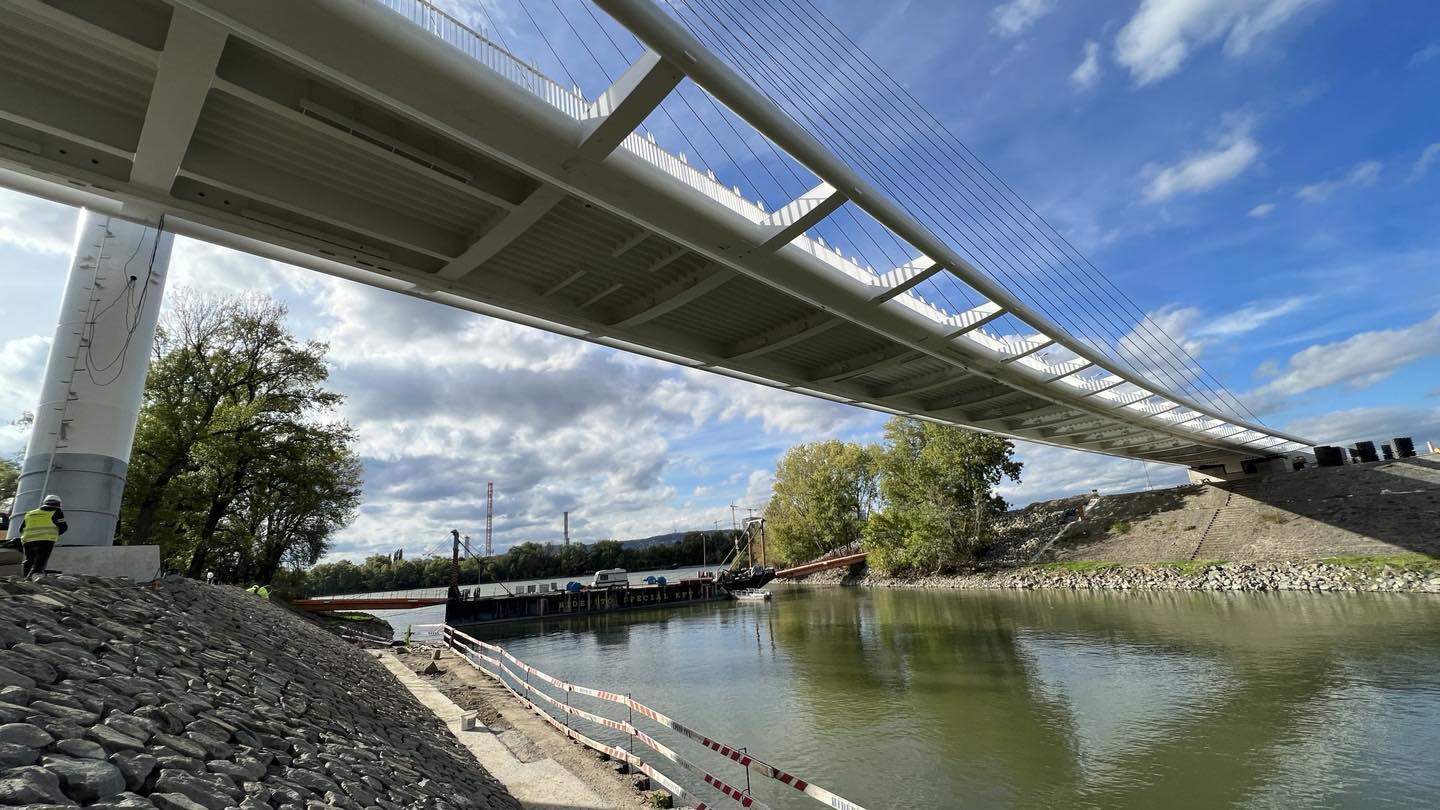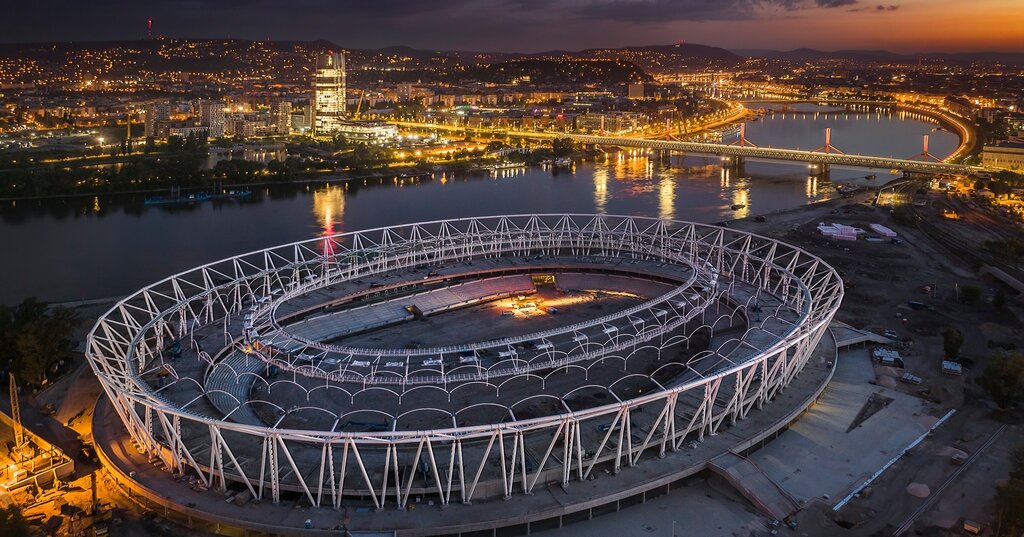PHOTOS, VIDEO: new Budapest bridge is ready!

Budapest’s newest bridge arches between Ferencváros and Csepel, the capital’s 9th and 21st districts. It is also near the new National Athletics Centre of Budapest. The bridge’s structure is completed, the building company Hídépítő Ltd announced this week. The unique overpass will serve the growing number of cyclists and pedestrians since cars will not be allowed to access it.
Connecting two districts
Budapest’s brand new bridge is over the RSD, the Ráckevei-Soroksári Danube, an arm embracing the Island of Csepel from the Eastern side. Some already call it Robinson bridge for some unknown reason. It was designed by Speciálterv Ltd and built by Hídépítő Ltd. Meanwhile, the steel structures were created by ACÉLHIDAK Ltd, Magyar Építők wrote.

The bridge aims to become an integral part of the nearby stadium. Gábor Pál, the designer of the overpass, said that the pipes’ skewness on the stadium’s facade is echoed back by the bridge’s great pylon. Mr Pál said that only electric cars carrying the athletes would be allowed to drive through the bridge and only during the competitions. That is because those vehicles serve the traffic between the training tracks of Csepel (21st district) and the stadium in Ferencváros (9th district). Otherwise, only pedestrians and cyclists will use the new arch.
Serving athletes, pedestrians, cyclists
The building company cooperated with the stadium’s designer, Marcel Ferencz (Napur Architect). The bridge’s central element is the tall but slender pylon on which the weight of the archway rests. The cable network attached to the pylon and the bridge is spreading but remains transparent for the viewers.

A new symbol of Budapest?
The bridge follows the structure of the new nearby stadium. Both are slender, which is the result of the cables. Both buildings’ structure hangs on those cables, which is the most cost-effective technique for spanning gaps. However, carrying out such plans needs precise work and preparedness.
Based on the aesthetics concept, the 170-metre-long bridge will float over the two arms of the Danube. The bridge deck hangs on the needle-like pylon with 53 Full Lock Coil cables. Thanks to that, the viewers’ spatial experience is different from every angle. According to the plans, the bridge will get a floodlight at night.

The bridge’s useful width is 7 metres and the total width is 12.71 metres. The pylon’s height is 65 metres.
Its structure is completed, Gábor Pál said. They are now carrying out the final work phases. By the start of the athletics world championships organised in Budapest in August 2023, they will complete Budapest’s probably slimmest bridge. Mr Pál believes it may become a new symbol of the Hungarian capital.
Here is a video about how the bridge will look when fully completed. You may check out some additional photos in the article of the Magyar Építők HERE.
And here is another video about the technology the bridge is being built:
Source: Magyar Építők






Only one floodlight at night? Or this that another factual inaccuracy,